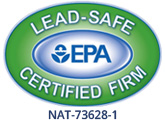How Stagnant Water Affects Plumbing Systems
 As businesses start to reopen and employees return to work, one issue has emerged in facilities that were closed for months: Stagnant water in the plumbing system.
As businesses start to reopen and employees return to work, one issue has emerged in facilities that were closed for months: Stagnant water in the plumbing system.
When water sits unmoved for weeks or months at a time, two factors affect its quality: Lead and chemicals leaching out from the pipes, and the accumulation of Legionella bacteria.
Although seasonal businesses may already contend with this issue or have a plan to address water quality, all entities should take water quality into consideration to ensure their facilities are safe for reopening. Here’s what you should know.
What Happens When Water Sits?
When water sits in the plumbing system or toilet tank, the oxygen in its composition starts to dissipate. Once the amount of dissolved oxygen decreases, bacteria and mold can grow and spread.
For short-term use, the chemicals in water are strong enough to make it safe for drinking. However, chlorine can start to decompose within days and factors like existing contaminants, pipe material and conditions and water temperature accelerate this process. Without its presence, any bacteria it controlled now has free range to congregate in pipes, nozzles and faucets.
Certain factors help control this occurrence on a day-to-day basis. As the most significant factor, water needs to be aerated and circulated, which happens whenever you flush, take a shower or use a faucet.
Issues Stemming from Stagnant Water
If your facility went entirely untouched during the shutdown, your pipes likely have mold and bacteria colonies built up over the past several months. As a result, what can happen?
You Risk Spreading Legionnaires’ Disease
As one of the most fatal waterborne pathogens in the United States, Legionnaires’ Disease is easily spread through droplets. Aerosolizing water, from a shower or similar nozzle, increases the risk someone will inhale the bacteria, where it travels directly to the lungs and results in pneumonia-like symptoms.
Although its incidence changes with the seasons and geography, the Northeast and Great Lakes regions have a higher risk. In less severe cases, individuals develop Pontiac fever with flu-like symptoms. Generally, symptoms of Legionnaires’ disease and Pontiac fever appear anywhere from two days to two weeks after exposure to Legionella bacteria.
Flooding
For regions prone to heavy storms that can lead to flood damage, stagnant water might become an environmental hazard.
If a backup occurs following a storm or your property’s drainage often leads to pooling, the bacteria- and mold-laden water in your pipes may flow out, damaging and contaminating the floor, carpet and foundation. Depending on how long it stays there, the stagnant water may also attract mosquitos. In the process, mold and bacteria continue to spread.
Odor
Based on the effects detailed above, the colonizing bacteria and mold often generate a strong, rotten scent. As organisms die off, this odor becomes worse and makes for an overall unpleasant experience for employees and customers.
Addressing Stagnant Water
While no industry or government standards exist, a facility’s pipes should be fully flushed and cleaned before opening, and the water quality tested to ensure it’s safe to use.
If you’re concerned about your facility’s water quality, have M.J. Fahy & Sons inspect and flush your commercial plumbing system. To learn more or schedule an appointment, contact today.




